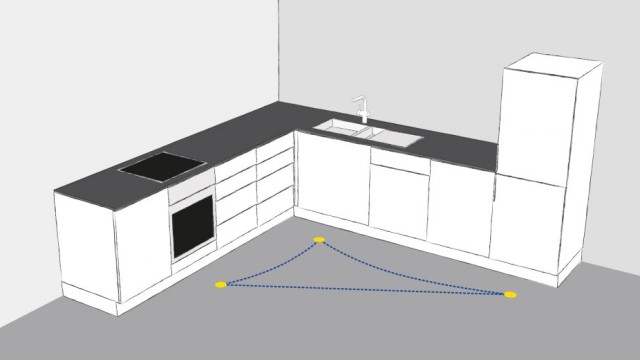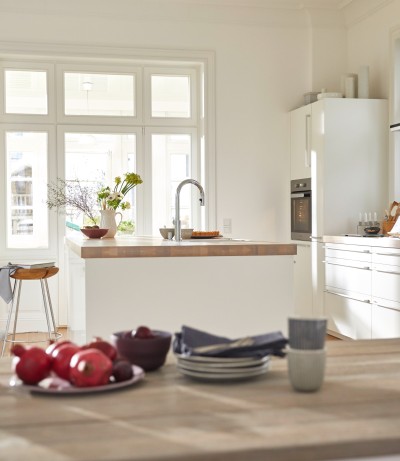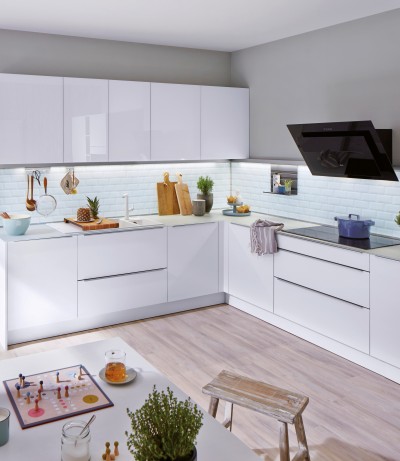Configuring workstations to suit left-handed users
It order to create a functional kitchen, you should be clear at the planning stage who is actually going to be chopping, cooking and cleaning up in there. Do you often work on your own or are there several people working in the kitchen at a time, so that you need a left-handed or right-handed kitchen, or perhaps a compromise? Refrigerator, dishwasher, sink and cooker. Where should the appliances ideally be positioned, and in what order? A right-to-left layout makes sense for left-handers, while for right-handers it’s the other way around. Left-handed people are in the minority. Yet for around twelve per cent of all Germans, being left-handed is a factor in ergonomic kitchen planning that should not be underestimated.
Greater safety using your stronger arm
If a left-hander moves into a home with a fitted kitchen, ultimately they’ll want to be able to rearrange the existing layout. Proper planning is recommended in the interest of safety: after all, left-handers are said to have more household accidents than right-handers, although this has not been proven.On closer inspection, however, it soon becomes clear that left-handers are at a disadvantage when handling household objects designed for right-handers. Lifting heavy objects out of a cabinet that opens on the left due to the attachment of the door hinges leads to the person gripping things with their right hand. This is a left-hander’s weaker arm. Ideally, therefore, the set-up should be reversed so that they can open the door with their right hand, leaving their left free to pick things up. Pull-out units and flaps are therefore better in households with both right- and left-handed people.



